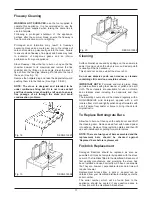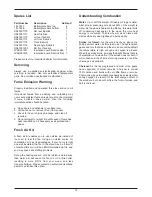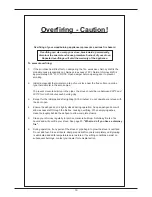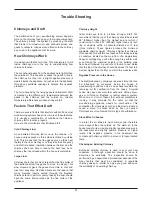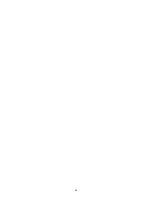
The chimney connector is a single-wall pipe or a listed and
approved double-wall pipe that connects the stove to the
chimney. Approved clearances change according to what
type of chimney connector you use. Consult with the
clearances section of this manual for the proper
clearances. The stove’s flue collar accepts only 6”
chimney connector.
Follow the chimney manufacturer’s direction for
installation.
We recommend that prior to installing your stove into a
masonry chimney you have the chimney inspected by a
qualified mason.
Note:
Canadian installations into a
masonry chimney
MUST
be fully relined with a listed solid
fuel chimney liner.
Horizontal Connection
The Heartland Artisan has the ability to connect stove pipe
out the top of the flue box vertically or out the back of the
flue box horizontally.
To run horizontally out the back of the flue box, remove
plate from rear of flue box by loosening 5/16” nut on the
inside of the flue box hold down. Ensure rope gasket
insulation is intact on plate perimeter. Remove flue collar
from top of flue box by removing one screw and small
bracket. Set screw and bracket aside and loosen only
screw on opposite side. Flue collar can now be removed.
Interchange position of the removed flue collar and the
flue plate. Ensure the two tabs on the flue collar are
securely tightened inside flue box. Ensure rope gasket is
tight on plate for proper seal. Tighten 5/16” nut on plate
hold down. Make sure all connections are tightly sealed.
All horizontal stove pipe must slope slightly upwards a
minimum of 1/4” per foot (6mm per 0.3m). This slope is to
allow water vapour to drain back into the stove. All
connections must be tight and secured by a minimum of
three equally spaced sheet metal screws. Under no
condition should the chimney connector have more than
one 90 degree bend or two 45 degree bends.
Connection Requirements
1. The chimney connector should be made of 24 gauge
or thicker sheet metal and should be 6” in diameter.
2. The last section of the chimney connector starting from
the stove should be screwed to the flue collar of the
stove with at least 3 self-tapping screws. Individual
sections of the chimney connector must be screwed
together with at least three sheet metal screws. The
last section should be securely attached to the
chimney. Be sure there are no “weak-links” in the
system.
3. The crimped ends of pipe sections should point
downward towards the stove so that any soot or
creosote that falls from the inside of the pipe will be
funnelled into a clean out or fall into the stove.
4. A horizontal run of chimney connector should be no
longer than 10 inches. A vertical run of stovepipe to a
prefabricated metal chimney should be no longer than
8ft.
5. Do not pass the stovepipe chimney connector through
a combustible wall if it can be avoided. If this cannot be
avoided, follow the recommendation in CSA
B365 in Canada and NFPA 211 in the U.S.,
recommendations on Wall-Pass Throughs.
6. Do not use single wall chimney connector as an
outside chimney.
7. Never pass a chimney connector through a
combustible ceiling.
8. The whole chimney connector should be exposed and
accessible for inspection and cleaning.
9. Galvanized stovepipe should not be used. When
exposed to the temperature reached by smoke and
exhaust gases, galvanized pipes may release toxic
fumes.
10.Horizontal runs of chimney connector should slope
upward 1/4” per foot from the stove toward the
chimney.
11. During a chimney fire, the chimney connector may
vibrate violently. The connector must be securely
attached to the pipe and chimney, and individual
sections must be securely attached together.
12.This stove is not to be connected to an air distribution
duct.
Chimney
DO NOT CONNECT THIS UNIT TO A CHIMNEY FLUE
SERVING ANOTHER APPLIANCE.
This unit is not to be connected to an existing
masonry fireplace.
Guidelines for Installing the
Chimney Connector
10

















